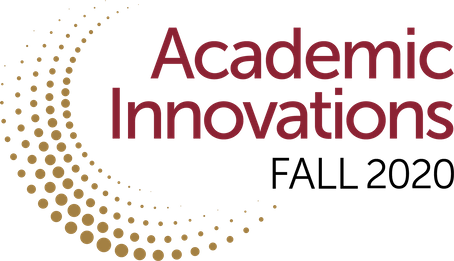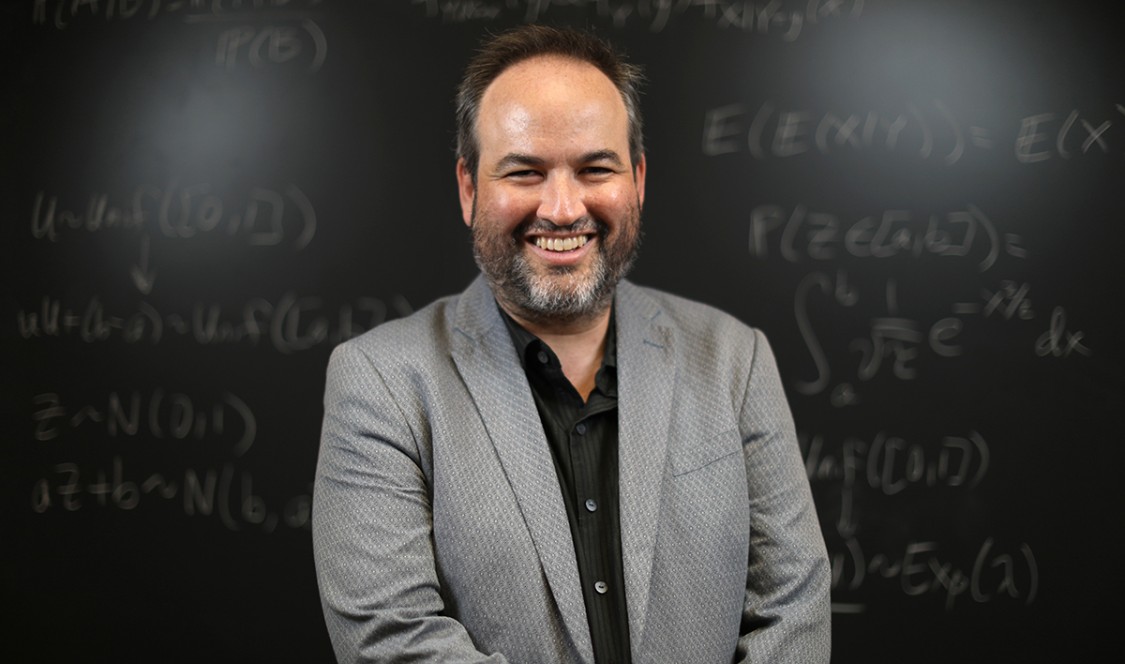Across the CMC curriculum, members of our faculty are meeting the challenge of these unprecedented and historic times, delivering exceptional coursework in a fully online modality for the fall semester. In our Academic Innovations series of faculty Q&As, professors share their curricular highlights, best practices, and how students are helping to shape virtual learning for a memorable, collaborative academic experience.
Mark Huber is the Fletcher Jones Professor of Mathematics and Statistics and George R. Roberts Fellow, as well as the program director of the data science major. This fall, he is teaching “Probability” and “Foundations of Data Science.”
What are you most excited about this fall from a teaching and learning perspective?
I’m most excited about reimagining the opportunity to create a virtual learning space that is as inclusive as possible. I’m teaching “Probability" and “Foundations of Data Science” in the fall and this is an opportunity to bring students into that abstract world. I’m looking forward to recreating classroom spaces virtually. I always enjoy working in new areas and using new techniques. After a summer of preparation, I am ready to go!

What learning opportunities do you see emerging from the pandemic?
I see how directly accessing technologies will assist students in owning the material, the concepts and ideals of the course. I’m hoping that students will enjoy the lab experiences, which will be a collection of exercises that they work through with software. My hope is that in working through these ideas themselves, I can serve as a backstop ready to help if they need it. If they can build these ideas themselves and understand what’s going on, that’s better for them.
What adjustments have you made to your courses as you approach the fall semester?
I am increasing the amount of online material for my students, as well as tutorials and lab experiments. I’ve also added 100 pages to my textbook. When I was teaching via Zoom in the spring, we had already met in person. So, what is going to be challenging for me for fall is building that same social cohesiveness in a virtual environment. I want students to still be able to work together in small groups. In order to make the online learning experience more collaborative, one of the things I’m doing this semester is to work with online white boards that can be shared. I’ve also created online lab experiments that require students to work together on data sets. I’ve also increased the accessibility to my office hours by breaking them up across the week into shorter time periods. More students will be able to come. They can just log into Zoom, which is easier than meeting physically, and it’s easier for them to get to me. In the spring, I found that students were accessing my office hours more frequently and I got a higher percentage of the class taking advantage of them.
How do you think CMC and its students are best prepared to adjust to virtual teaching? What gives you the greatest confidence in this semester?
To help prepare us for online teaching, CMC held teaching workshops to help faculty build better syllabi, improve homework and find ways to interact with students. The College and the Dean of Students office have done a wonderful job to prepare faculty and students, including getting faculty and students the equipment and software we need to be ready for the fall. Often times, we as faculty are not always conscious of things that students need in order to thrive; it’s easy to respond to, but harder to anticipate those needs. One aspect of online teaching is that CMC faculty have been proactive in creating resources and online tools for their students.
How do you think CMC and its students are best prepared to adjust to virtual teaching? What gives you the greatest confidence in this semester?
To help prepare us for online teaching, CMC held teaching workshops to help faculty build better syllabi, improve homework and find ways to interact with students. The College and the Dean of Students office have done a wonderful job to prepare faculty and students, including getting faculty and students the equipment and software we need to be ready for the fall. Often times, we as faculty are not always conscious of things that students need in order to thrive; it’s easy to respond to, but harder to anticipate those needs. One aspect of online teaching is that CMC faculty have been proactive in creating resources and online tools for their students.
What are some benefits of online teaching that could last beyond the pandemic?
With remote teaching, more faculty are putting resources and tutorials online, helping students learn concepts, and that will help everyone across the board, even when we return to campus. Once a video or a tutorial are created, professors can use that resource for the rest of their careers. One thing that students are gaining is an ability to take the lead in their own education. One of the advantages of the pandemic is for students to follow their own initiative to get the most out of the resources available to them.
Click here for a full list of curricular innovations from CMC faculty in the fall.
--Anne Bergman

